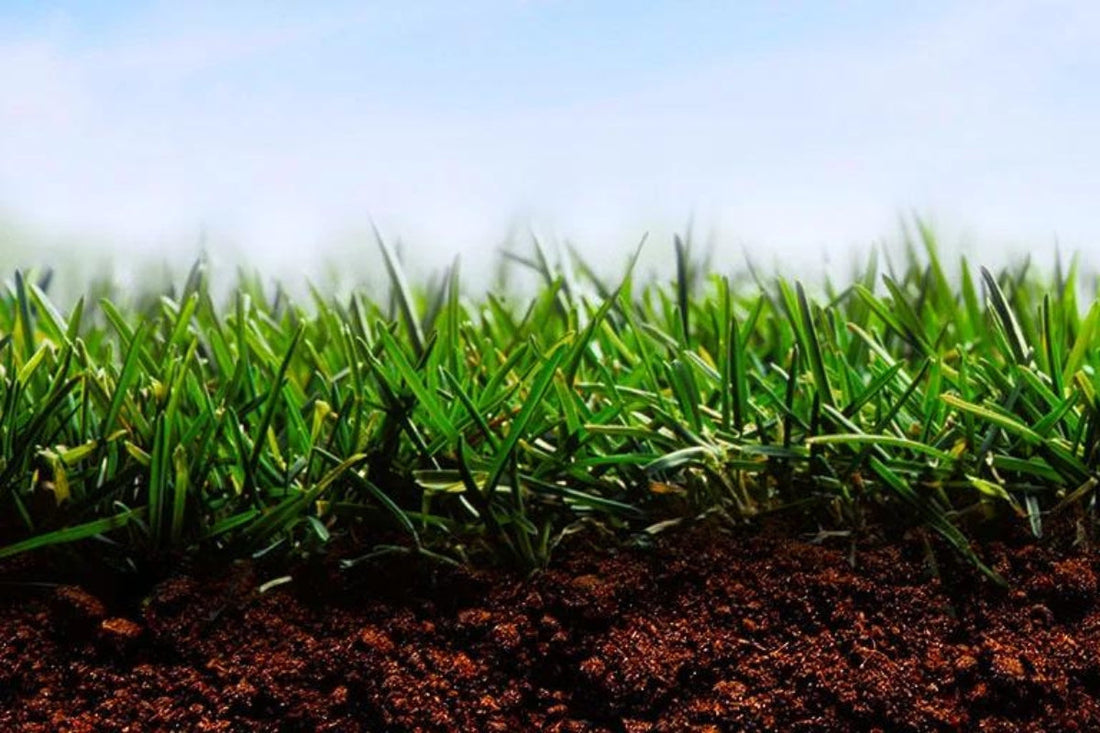Every homeowner wants a lawn that looks green, full, and resilient – but too often, seed from the big-box store leaves you with thin patches, brown spots, or grass that simply won't hold up.
For those in northern climates and the transition zone, types of fescue grass provide the reliability that other cool-season grasses often lack.
Fescues are valued for their deep roots, shade tolerance, and ability to stay green when other lawns fade. They handle drought, adapt to different soils, and offer varieties for both play-heavy backyards and low-maintenance landscapes.
In this guide, you'll learn how each major fescue variety performs, which ones thrive in your conditions, and how to plant and care for them with confidence.
What this article covers:
- Why Homeowners Choose Fescue Grass
- Types of Fescue Grass: Which One Is Best for Your Lawn?
- How to Choose the Right Fescue for Your Lawn
Why Homeowners Choose Fescue Grass
Fescues are cool-season grasses, meaning they thrive in spring and fall when soil temperatures are mild.
They are particularly well-suited to northern climates and the transition zone, where summers can be hot and winters cold. Unlike some grasses that demand near-perfect conditions, fescues are versatile, forgiving, and practical.
Key reasons homeowners choose fescues include:
- Deep roots and drought tolerance: Tall fescues, especially, are known for their ability to survive dry spells better than many other cool-season grasses.
- Shade performance: Fine fescues excel in low-light conditions, making them ideal under trees or in partial shade.
- Year-round appeal: Many fescues keep a pleasing green color into winter, particularly in transition areas.
- Overseeding potential: Turf-type tall fescues and blends work well for filling in patchy lawns without starting over completely.
For homeowners weighing what grass seed should I use in these regions, fescue often provides the right combination of low-maintenance resilience and professional-level appearance.

Types of Fescue Grass: Which One Is Best for Your Lawn?
Fescue is not just one grass, but a family of grasses with distinct traits. Some thrive in deep shade, others excel in drought, and many are blended for versatility.
Understanding the different types of fescue grass seed helps you choose a variety that works with your lawn's specific conditions.
Tall Fescue
Tall fescue is the most widely planted fescue type for residential lawns.
It produces medium to coarse blades, grows in clumps, and withstands heat and drought better than most cool-season grasses. Tall fescue is also highly traffic-tolerant, making it ideal for families with kids and pets.
For DIY homeowners who want proven seed, Lawn Synergy offers certified blends like Envy Premium Tall Fescue Grass Seed and North Star Bluegrass and Fescue Blend. These professional-grade products outperform generic bags by delivering denser coverage, zero weeds, premium varieties, and stronger roots.
Fine Fescues (Shade-Tolerant Types)
Fine fescues are a group of grasses with fine, narrow blades and excellent shade tolerance. They perform best in low-input situations where minimal mowing and fertilization are preferred.
- Creeping Red Fescue: Grows well in shade, has a fine texture, and requires less maintenance.
- Hard Fescue: Known for drought tolerance and low-fertility adaptability. It's slow-growing, which reduces mowing frequency.
- Chewings Fescue: Fine-bladed and disease-resistant, ideal for cooler, moist climates.
- Sheep Fescue: A bunch-forming type that thrives with very little maintenance, often used in naturalized or low-input areas.
We've found that fine fescues do best when they're allowed to grow slightly taller – usually around 3.5 to 4 inches. That extra height helps the grass capture light in shaded spots and naturally suppresses weeds, making maintenance easier for DIY homeowners.

Turf-Type Tall Fescue (TTTF)
Turf-type tall fescues are improved cultivars of tall fescue. They feature finer blades, darker green color, and a softer feel underfoot while maintaining the durability of traditional tall fescue.
TTTF is excellent for overseeding because it blends well with other cool-season grasses. It creates a more refined look that rivals Kentucky bluegrass while staying resilient under traffic and stress.
Blends like Envy Premium Tall Fescue Grass Seed and North Star Bluegrass and Tall Fescue Grass Seed for homeowners who want both beauty and performance.
Based on our estate-care experience, we've seen the best results when TTTF lawns are overseeded every fall, even if the turf appears healthy.
Annual overseeding adds density, improves color, and keeps the lawn resilient against disease and summer stress – small steps that give DIY homeowners the same level of durability we once reserved for elite properties.
Blended Fescue Mixes
Blends combine several fescue types, sometimes with other grasses like rye or bluegrass, to create lawns that can withstand variable conditions.
By mixing species, blends improve disease resistance, shade performance, and drought tolerance.
For example, overseeding with perennial rye provides quick cover, while tall fescue and Kentucky bluegrass fill in for long-term strength.

How to Choose the Right Fescue for Your Lawn
Not all lawns are alike. The best fescue for your property depends on climate, soil type, sunlight, and how you use the space.
- Climate zone: Northern and transition zones favor fescues. Tall and turf-type tall fescues thrive in hotter summers, while fine fescues perform better in cooler, shaded conditions.
- Shade levels: Heavy tree cover points you toward creeping red or chewings fescue. Sunnier areas may benefit from turf-type tall fescue.
- Soil type: Sandy soils pair well with drought-tolerant fescues, while heavier soils need varieties with strong roots. Soil testing provides the clarity needed to make the right choice.
- Soil pH: Fescues generally perform best in soils with a pH between 5.5 and 7.5. If the soil is too acidic or too alkaline, growth and color will suffer until the pH is corrected. Use a soil test kit to figure out your pH.
- Traffic and use: Active families with kids or pets should lean toward tall fescue or turf-type tall fescue. Decorative or low-input lawns may thrive with fine fescues.
We've learned that testing soil before seeding is one of the biggest difference-makers. Adjusting pH first (sometimes as simple as applying lime or gypsum) lets fescues establish faster and stay healthier.
Conclusion
Choosing the right types of fescue grass is mostly about aligning your lawn with the variety that will thrive in your climate, soil, and daily conditions.
Tall fescue delivers toughness for active families, fine fescues bring beauty to shaded or low-input areas, and turf-type tall fescues combine resilience with a refined, bluegrass-like appearance.
Whatever your property demands, there is a fescue that can give you the professional results you want.
At Lawn Synergy, we've taken more than 30 years of estate-care expertise and applied it to the products we offer today.
From certified fescue grass seed blends to nutrient-rich fertilizers and soil conditioners, every product is designed to give DIY homeowners professional results without filler or guesswork.
If you're ready to stop settling for patchy, underperforming turf, choose a fescue variety that matches your property and support it with Lawn Synergy's professional-grade products.
The result is a lawn you can count on – dense, green, and resilient season after season.
Ready to learn more about lawn care? Check out these articles:

